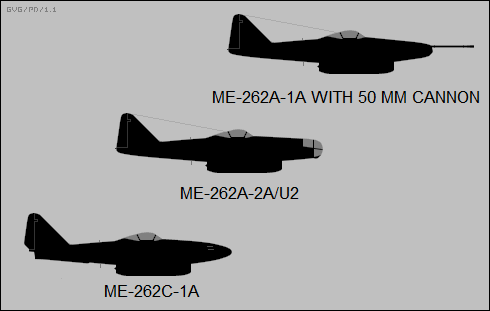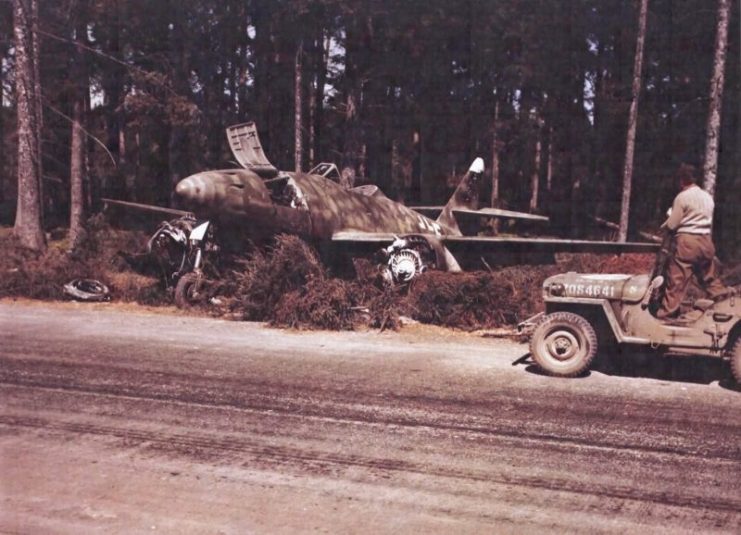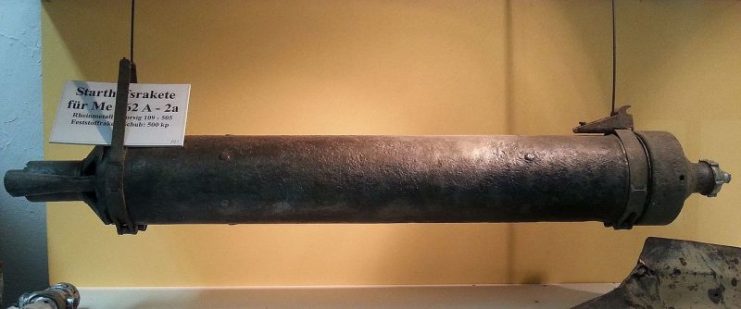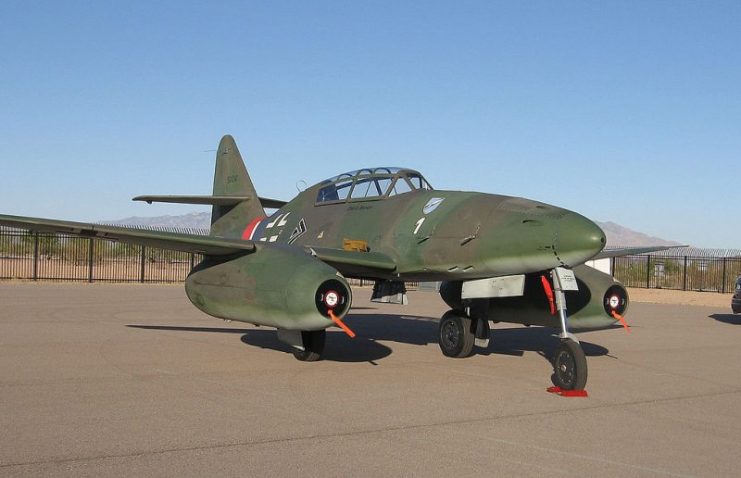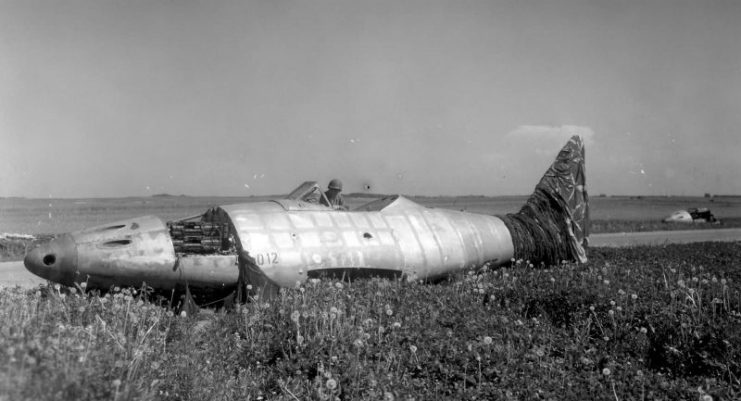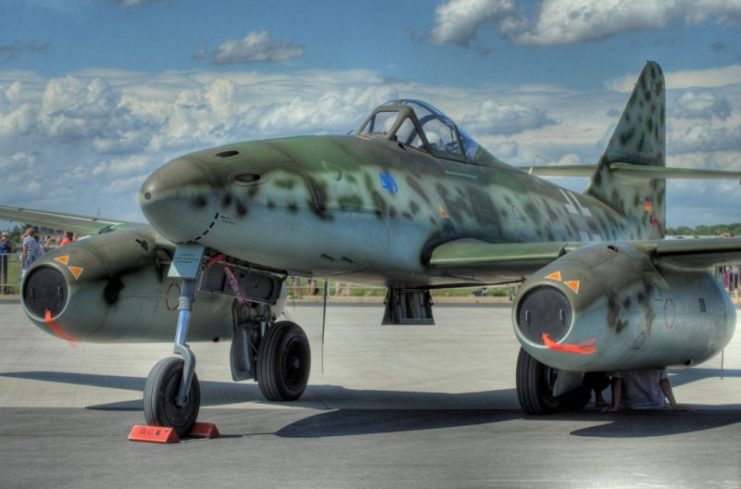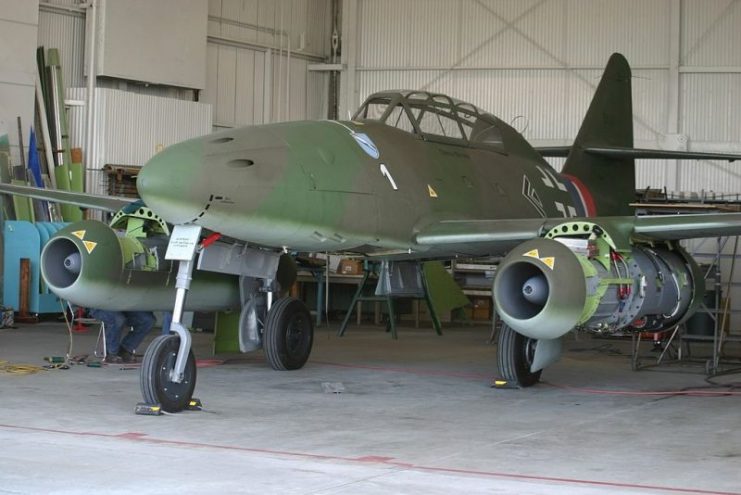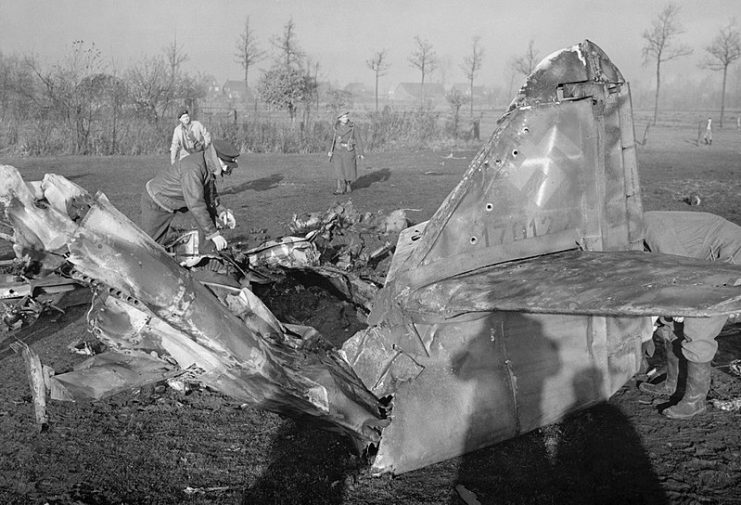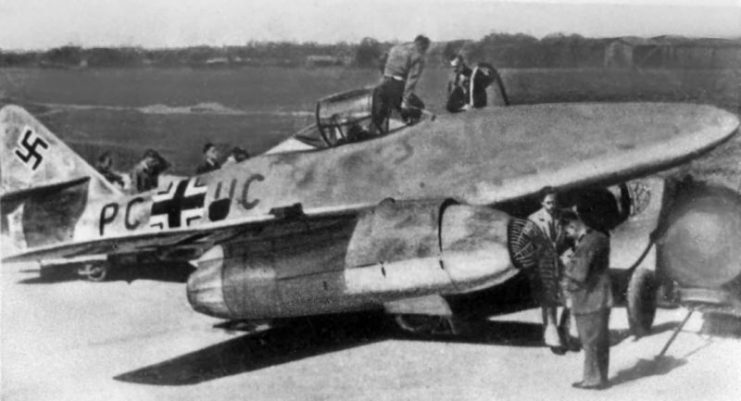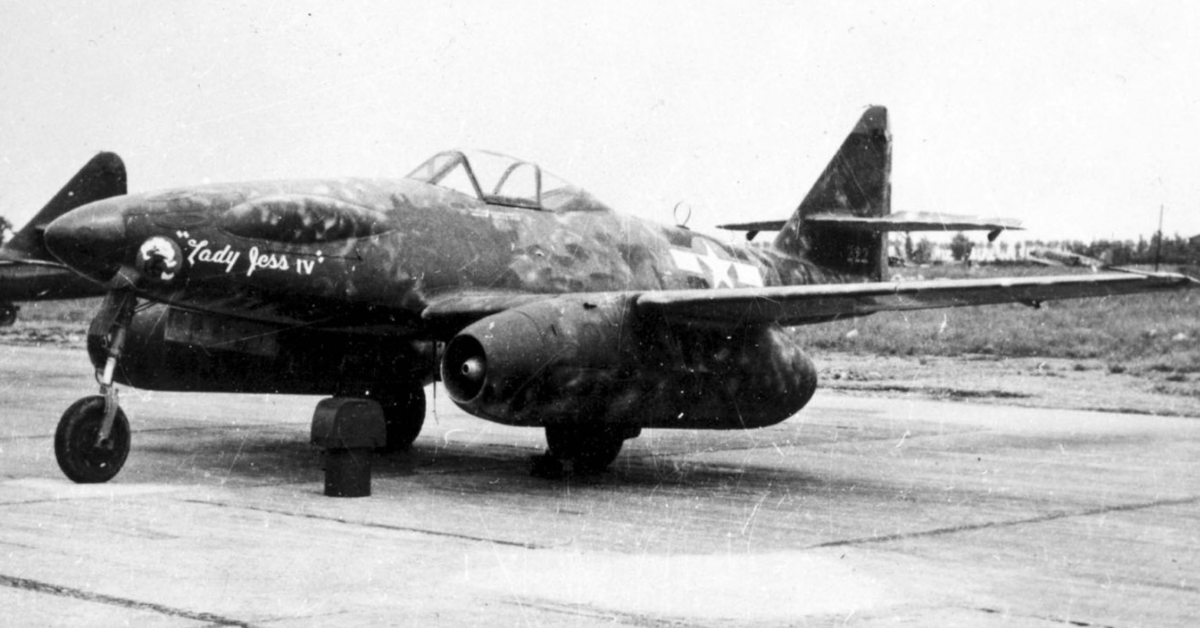Arriving late in the Second World War, the Messerschmitt Me262 was the world’s first operational jet fighter, a terrifying new weapon in the skies above Europe.
A Would Be War Winner
During the Second World War, the German high command had a great belief in the potential of technology. Superior weapons appropriately used had let them conquer Poland and France, as well as winning significant victories against their other opponents. They, therefore, had great faith in what new weapons could do.
The development of a jet fighter, which their engineers worked on throughout the war, was expected to bring them aerial superiority. It gave some a belief in the potential for victory at last after it became near impossible.
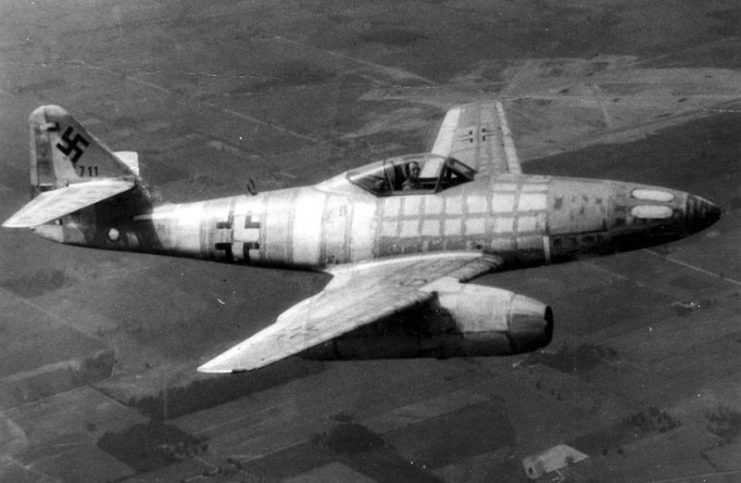
Built for BMW Engines
The Me262 was designed to be built around gas turbines being developed by BMW. These were a ground breaking development, and when work on the Me262 started in 1938, it had the potential to transform war in the skies.
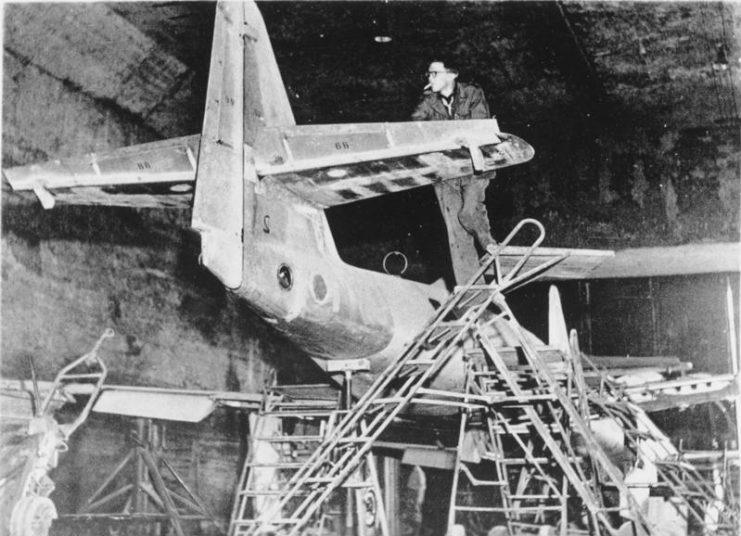
A Jet Plane Without a Jet Engine
The first prototype of the rest of the aircraft was ready nearly a year before the BMW engine was. So that testing and development could continue, this model was fitted with a Jumo piston engine in place of jet engines, allowing it to take its first flight on the 18th of April 1941.
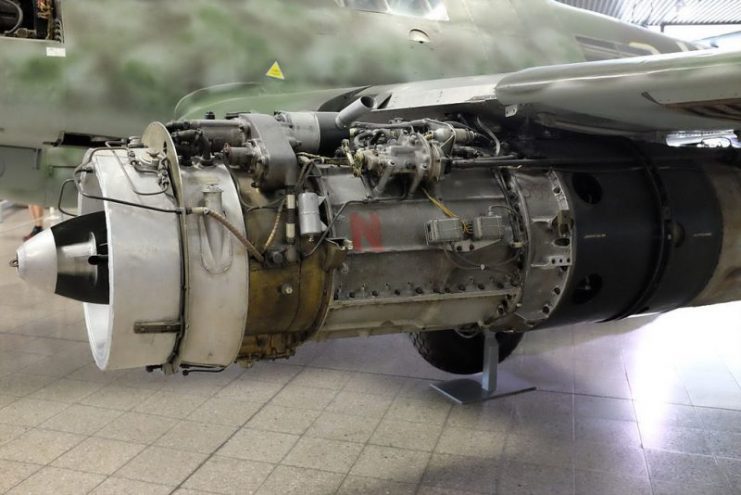
All Together Now
The fuselage was finally combined with a pair of jet engines in early 1942. The first jet-powered flight by an Me262 took place in March that year. The piston engine was kept in case the jet engines failed.
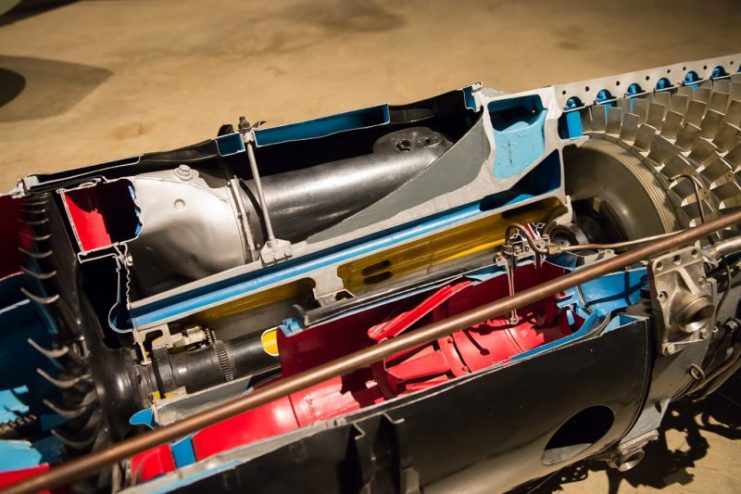
A Troubled Start
Such safety precautions proved to be wise. Just after takeoff on that first flight, the jet engines failed. It was only thanks to the luck and skill of the pilot that the plane was landed in one piece.
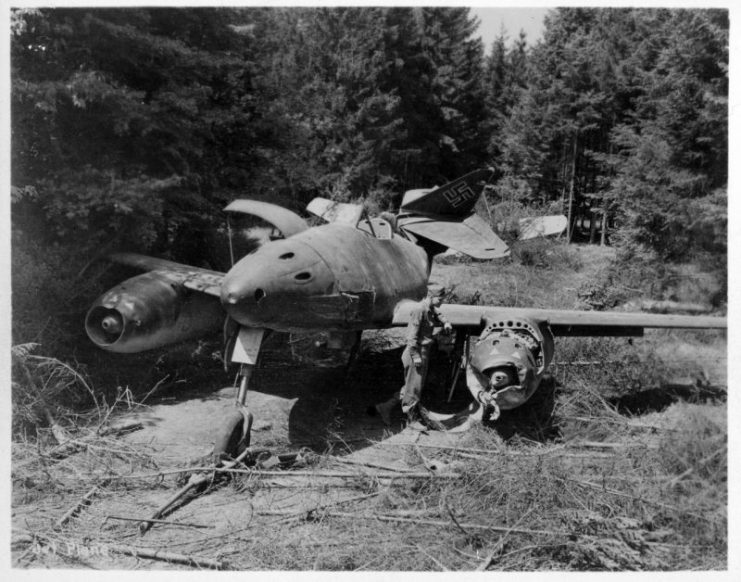
A Change of Engines
Following this failure, the engines were redesigned. In place of the previous BMW turbines, the Me262 was fitted with a pair of Junkers turbojets. These were heavier than the previous engines but proved better at keeping the plane aloft.
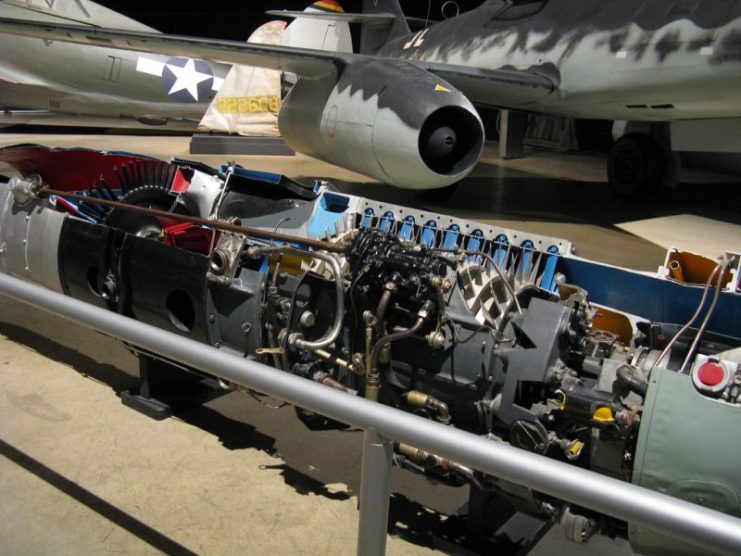
Not a Priority
Despite their love of technology, the men at the top of the Messerschmitt company and German High Command did not make the Me262 a high priority during these middle years of the war. Instead, they focused on seeking improvements to combat planes that had already proved their potential in battle, such as the BF109 and Bf110.
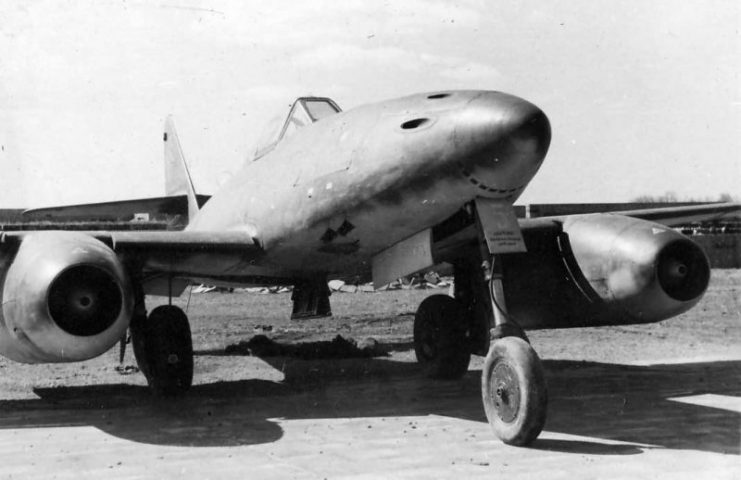
https://youtu.be/MLmaUUjaU4g
A Boost from Galland
In May 1943, flying ace Fighter General Adolf Galland took his first flight in an Me262. It was a turning point for the plane. Galland’s high rank and his status as a famed fighter ace meant that people listened when he became an advocate for the jet. He called for mass production to begin, and so renewed effort and resources were poured into the Me262 program.
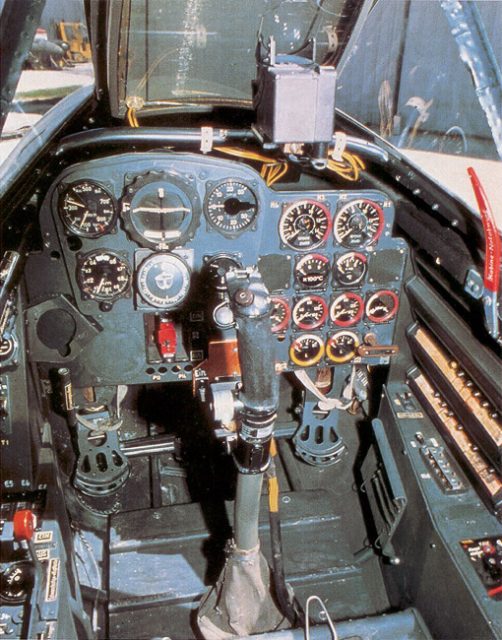
A Serious Setback
Three months later, the Me262 faced a fresh setback. On the 17th of August, the United States Army Air Forces launched the Schweinfurt Regensburg mission, a coordinated bombing raid against centers of German aircraft production. The Me262 production lines were housed in factories in Regensburg which were hit during the raid.
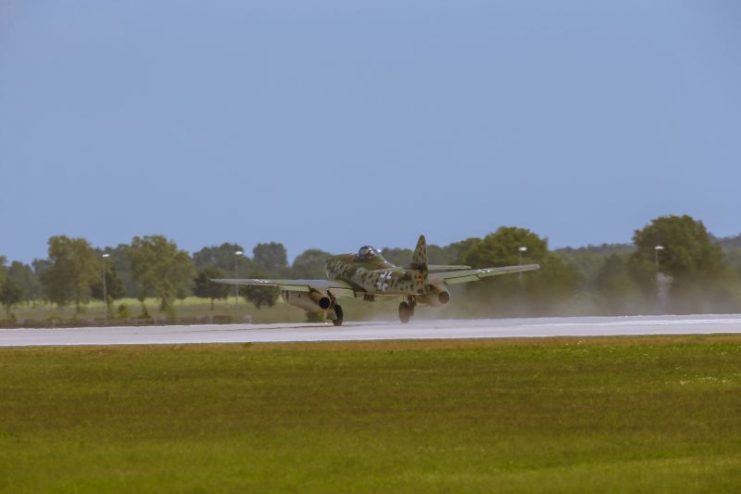
In the aftermath, production of the jet was moved to Bavaria. Whereas Regensburg already had the skilled labor needed to build the Me262, this was missing in its new home, leading to further delays.
Entering Service
In July 1944, the Me262 finally entered frontline service with the Luftwaffe. By now, the Allies had landed in Normandy and the tide of war was turning. The Germans needed any advantage they could get.
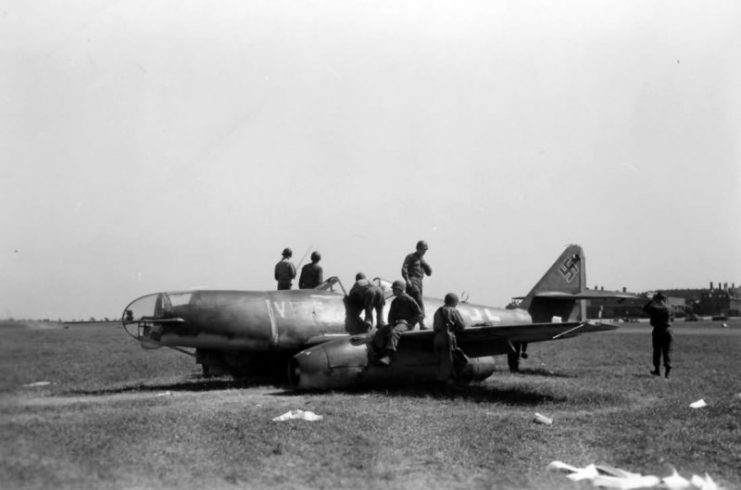
First Jet Combat
On the 25th of July, an Me262 attacked a British Mosquito plane carrying out reconnaissance work over Munich. It was the first time a jet plane had taken part in aerial combat.
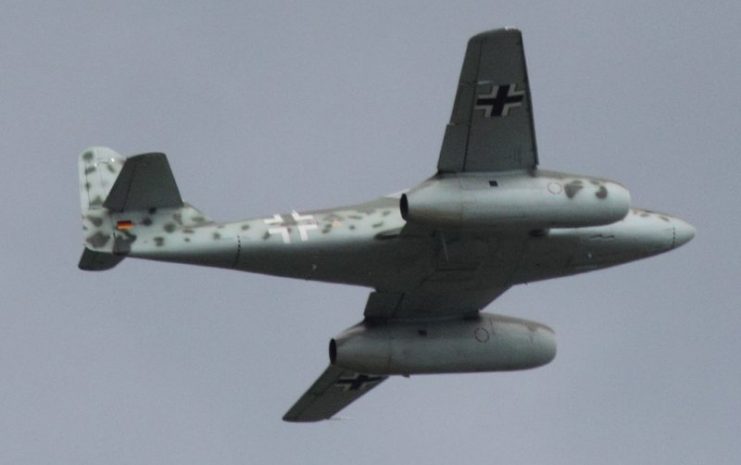
Three Different Roles
Hitler had insisted that high performance planes should be designed to act as bombers as well as fighters. Thanks to this, the Me262 had the capacity to be deployed in three different roles. It served as a fighter bomber, a reconnaissance plane, and an interceptor.
Deadly Against Bombers
Against the lumbering planes of the Allied bomber fleets, the Me262 proved to be a deadly hunter. Armed with four 30mm cannons and 24 rockets, it carried an impressive weight of firepower.
Despite this, there was only one period of focused Me262 anti bomber action. The 18th to the 21st of March 1945. During this period, 40 sorties a day were flown against American bombers, as the Third Reich fought its last desperate battle for survival. But by then, it was too late.
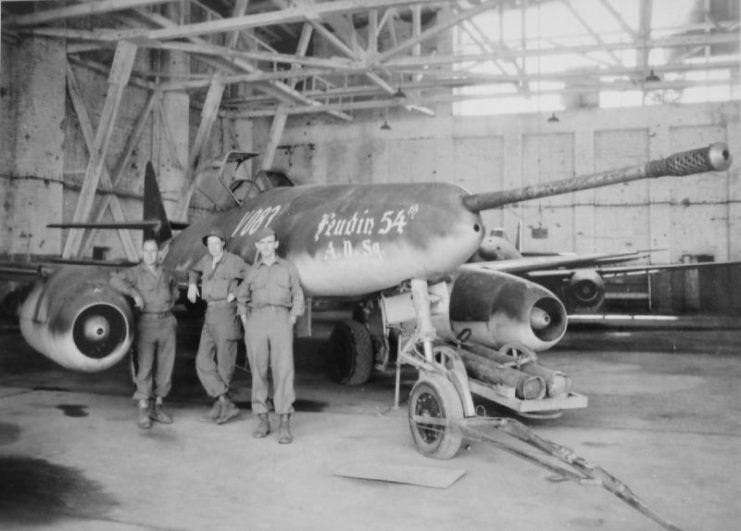
Mixed Performance Against Other Fighters
With a maximum speed of 540mph and an incredible array of firepower, the Me262 could often gain the edge over other fighters. But a lack of maneuverability could put it at a disadvantage once the planes closed for combat. Me262s sometimes suffered when faced with American P-51 Mustangs.
The most interesting fighter match up never even took place. By the late war, Britain’s Gloster Meteor jet fighter was also in the air. Faster and better armed than its British opponent, the Me262 would likely have won in any confrontation, but we can’t know for sure as they never faced each other. The first jet vs jet combat would not come until the Korean War.
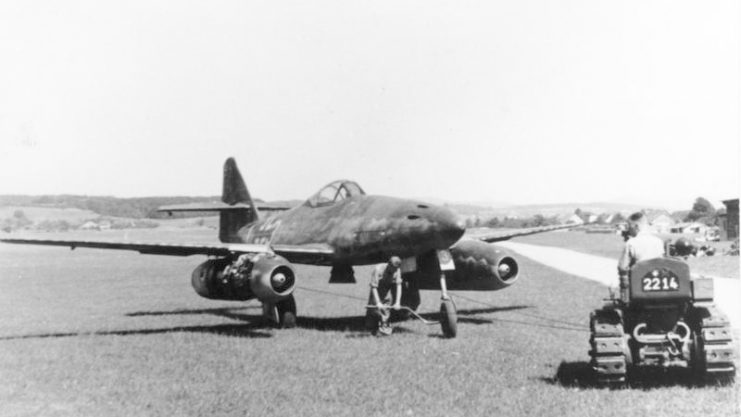
Few Saw Combat
Messerschmitt produced large numbers of the Me262a. From the moment they started rolling off the production lines to the end of the war, over 1400 were built. Yet fewer than 300 of them took part in combat.
This happened for several reasons. Some were stuck on the ground while they were converted into bombers. Others lacked appropriately trained pilots or sufficient fuel. Hundreds were destroyed before they had a chance to fight, caught on the ground by Allied air raids.
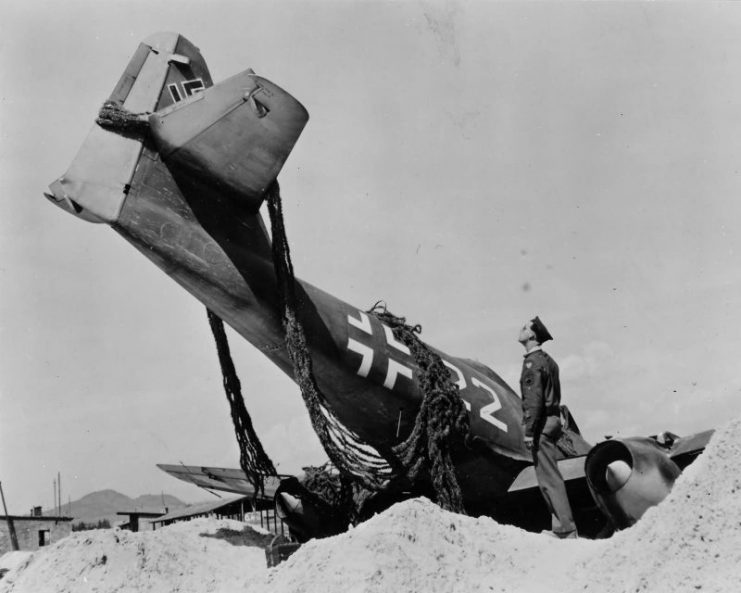
An Inspiration
The Me262 never had the chance to fulfill its early promise. But it became an important step in the development of combat aircraft, inspiring the designers of early jet fighters around the world.
